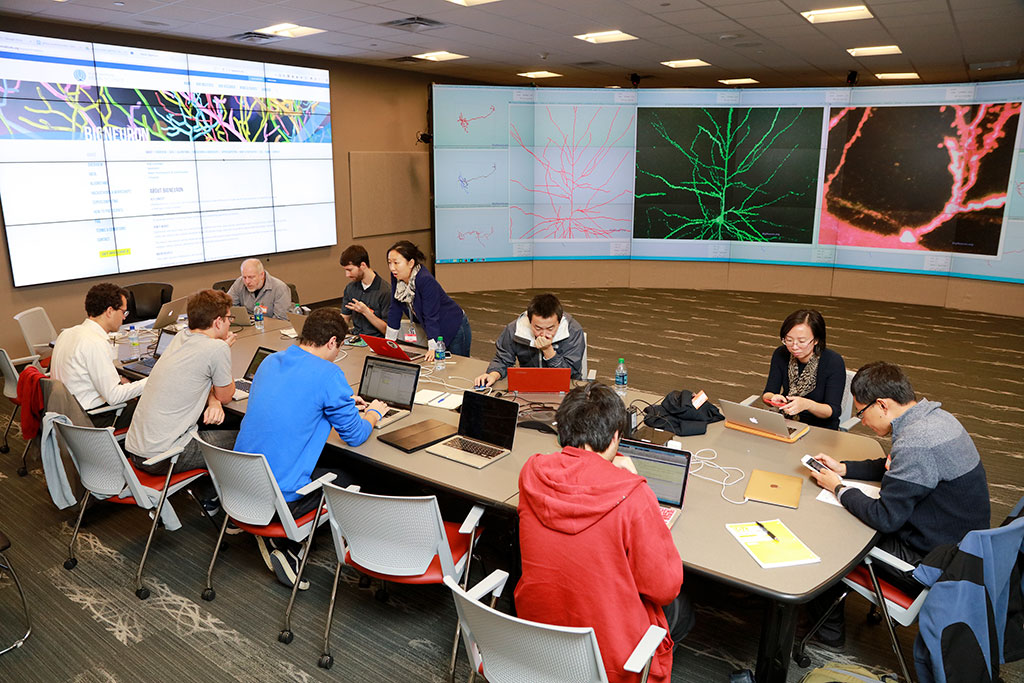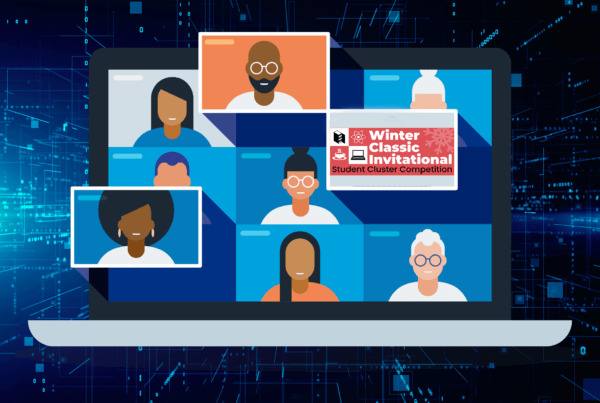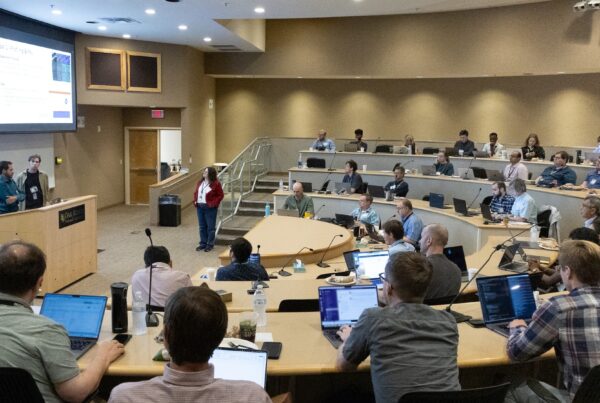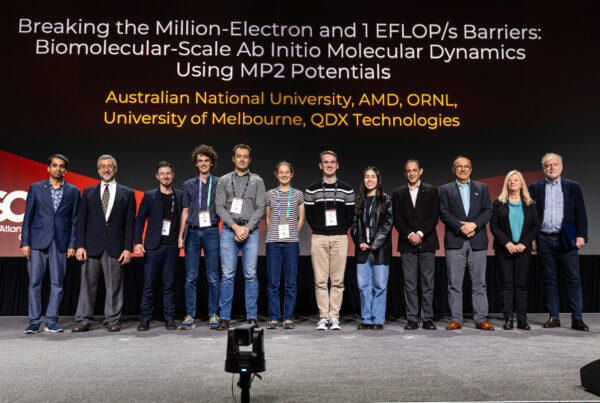
BigNeuron Hackathon attendees not only ran their codes on Titan but also used the EVEREST visualization wall to observe their neuron reconstructions.
Week-long workshop helps increase neuroscience researcher collaboration toward international BigNeuron initiative
Neurons, one of the basic building blocks of life, respond to electrical stimuli, called synapses, to transmit countless feelings to and from the brain. Despite the integral role of neurons in the nervous system, scientists understand very little about how neurons function.
To consolidate the knowledge base surrounding computationally modeling neurons, researchers at the Allen Institute for Brain Science and the US Department of Energy’s (DOE’s) Oak Ridge National Laboratory (ORNL) organized the first BigNeuron Data Analytics and Visualization Hackathon, which took place November 16–20 at ORNL.
Organized by the Allen Institute, BigNeuron is a community project aimed at defining and advancing the state of the art in computational neuroscience research. Being able to accurately model single neurons’ behavior computationally is an essential unsolved challenge for neuroscience researchers.
“Most hackathons are designed to work on porting computer codes, but this hackathon is focused specifically on biological research,” said Arvind Ramanathan, ORNL computer scientist and co‑organizer of the event.
Attendees—representing 13 organizations in government and the private sector—worked to scale up their algorithms and also port their data to the Oak Ridge Leadership Computing Facility’s (OLCF’s) Titan supercomputer, a Cray XK7 capable of 27 petaflops, or 27 quadrillion calculations per second.
The hackathon represented the first time that many of these algorithms ran on such a large-scale machine, and the OLCF, a DOE Office of Science User Facility located at ORNL, offered computing resources and expertise so researchers could not only run their codes on Titan, but also visualize their results on the OLCF’s EVEREST visualization wall.
Hanchuan Peng, associate investigator at the Allen Institute, saw the hackathon as an opportunity to consolidate the computational neuroscience knowledge base and develop some best practices for all researchers within the field. “We would like to have a state-of-the-art computational method that can become standardized across the community,” Peng said.
One of the challenges for computational neuroscience researchers is verifying research being done at other organizations. Most research teams use their own codes and computational tools, and as a result, it is difficult for teams to verify research being done at other institutions.
For Giorgio Ascoli, George Mason University molecular neuroscience professor and co-organizer of the event, getting experts together to share their algorithms and tools was an important first step in advancing the greater goals for the research community.
“Some of the major players in the research came together to share code, and we are building a consensus among various algorithms, and this kind of work is best when people are all in the same room,” Ascoli said.
In addition to researchers working together, many organizations at ORNL are helping support BigNeuron.
ORNL’s Health Data Science Institute (HDSI) cosponsored the event. HDSI staff saw this as an opportunity to engage with a broader community of users, particularly those who are relatively new to high-performance computing.
The event was funded by the International Neuroinformatics Coordinating Facility (INCF), which also provided supercomputing facilities for benchmarking. INCF was launched in 2005, following a proposal from the Global Science Forum of the Organization for Economic Cooperation and Development (OECD) to establish international coordination and collaborative informatics infrastructure for neuroscience. OECD currently has 18 member countries across North America, Europe, Australia, and Asia.
INCF establishes and operates scientific programs to develop standards for neuroscience data sharing, analysis, modeling, and simulation. At the same time, the organization coordinates an informatics infrastructure designed to enable the integration of neuroscience data and knowledge worldwide and to catalyze insights into brain function in health and disease.
One of the major challenges for the group was to port its data to the OLCF’s systems. Experts in the OLCF’s new Advanced Data and Workflow group, in addition to staff helping with ORNL’s Compute and Data Environment for Science (CADES) helped the group port its code and run Microsoft Windows-based applications on OLCF computing resources.
The event’s co-organizers were pleased with the group’s productivity and hope that ORNL can position itself as a leader in computational neuroscience by periodically hosting BigNeuron events.
Oak Ridge National Laboratory is supported by the US Department of Energy’s Office of Science. The single largest supporter of basic research in the physical sciences in the United States, the Office of Science is working to address some of the most pressing challenges of our time. For more information, please visit science.energy.gov.





